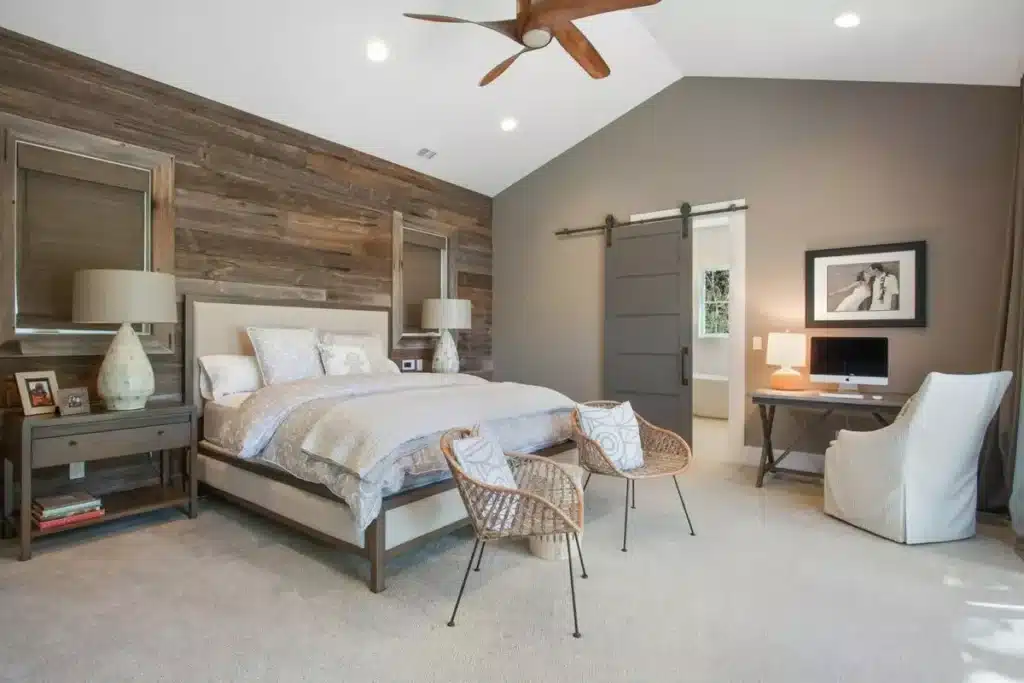How To Vent A Range Hood On An Interior Wall
Introduction
How To Vent A Range Hood On An Interior Wall: When it comes to kitchen ventilation, a range hood plays a crucial role in removing smoke, odors, and grease from the air. Properly venting a range hood is essential to maintain a clean and healthy kitchen environment. While many homeowners choose to install their range hoods on exterior walls for easy venting, there are situations where venting on an interior wall becomes necessary. Whether you have limited exterior wall space or prefer a more discreet venting option, this article will guide you on how to vent a range hood on an interior wall.
Venting a range hood on an interior wall can be a practical paint interior solution for various reasons. Secondly, venting on an interior wall can offer a more aesthetically pleasing solution.
Additionally, it is important to ensure that your kitchen has proper ventilation in general. This can include opening windows or using exhaust fans to help remove excess heat and improve air circulation.

Does a range hood have to be vented outside?
Yes, a range hood does have to be vented outside. It is designed to capture and filter the air, ensuring a clean and healthy environment in the kitchen. Venting the range hood outside is crucial for its proper functioning and effectiveness.
When cooking, a range hood sucks in the air and traps the grease, smoke, and odors in its filters. Venting the range hood outside allows for the expulsion of these pollutants, keeping the kitchen air fresh and clean.
Venting a range hood outside also helps to prevent the buildup of moisture in the kitchen. Cooking produces steam and moisture, which can lead to the growth of mold and mildew if not properly ventilated.
Furthermore, venting the range hood outside helps to prevent the accumulation of grease on surfaces and cabinets in the kitchen. Grease particles can easily settle on surfaces and create a sticky and difficult-to-clean mess.
Can I vent a range hood out the side of the wall?
Yes, it is possible to vent a range hood out the side of the wall. Venting a range hood is an important step in the installation process as it helps to remove smoke, odors, and grease from the kitchen. While most range hoods are designed to be vented through the ceiling, there are options available for venting through the side wall.
When considering venting a range hood out the side of the wall, there are a few factors to keep in mind. First, it is important to ensure that there is enough space on the side wall to accommodate the venting system. This may require measuring the available space and selecting a range hood that is compatible with side wall venting.
Additionally, it is important to consider the distance between the range hood and the exterior wall. The length of the ductwork needed to vent the range hood will depend on this distance. It is recommended to consult the manufacturer’s guidelines or a professional installer to determine the appropriate length of ductwork needed.
Another consideration when venting a range hood out the side of the wall is the type of ductwork to use. It is important to use the correct size and material of ductwork to ensure proper ventilation. Metal ductwork is typically recommended for range hood venting as it is durable and resistant to grease buildup.
Can you mount a range hood to the wall?
Yes, you can mount a range hood to the wall. A range hood is an essential appliance in the kitchen that helps to remove smoke, odors, and grease particles from the air while cooking. It is typically installed above the stove or cooktop to effectively vent out the air and keep the kitchen clean and odor-free.
Mounting a range hood to the wall is a relatively straightforward process. First, you need to determine the appropriate height for installation. The general rule of thumb is to mount the range hood at a height of 24 to 30 inches above the cooking surface. This ensures that the hood effectively captures the smoke and odors without obstructing your view while cooking.
Before mounting the range hood, it is important to locate the studs in the wall. The studs provide the necessary support for the weight of the hood. Use a stud finder to locate the studs and mark their positions on the wall. Once you have identified the studs, you can proceed with the installation.
Next, you will need to drill pilot holes into the wall at the marked stud locations. These pilot holes will serve as guides for screwing in the mounting brackets. Attach the mounting brackets to the wall using screws and make sure they are securely fastened.
Once the mounting brackets are in place, you can lift the range hood and align it with the brackets. Carefully slide the hood onto the brackets and ensure that it is level. Use a level to check the alignment and make any necessary adjustments. Finally, secure the range hood to the brackets using screws or other provided hardware.
How do you vent a stove without a hood?
Venting a stove without a hood can be a challenge, but there are several alternative methods you can use to effectively remove smoke, odors, and excess heat from your kitchen. While a hood is the most common and efficient way to vent a stove, it is not always feasible or practical in every kitchen. Whether you have a small kitchen with limited space or you are renting a space where installing a hood is not an option, there are still ways to ensure proper ventilation.
One option is to use a downdraft ventilation system. This type of system is installed behind or beside the stove and pulls the air down and out through ductwork that leads outside. Downdraft systems are typically more expensive than hoods and may not be as effective at capturing smoke and odors, but they can still provide adequate ventilation in certain situations.
Another option is to use a recirculating range hood. These hoods do not require any ductwork and instead use filters to remove smoke and odors from the air before recirculating it back into the kitchen. While this method does not remove the heat from the kitchen, it can still help to improve air quality.
Is it safe to cook without a vent?
When it comes to cooking, having proper ventilation is essential for a variety of reasons. Not only does it help to remove odors and smoke from the kitchen, but it also helps to eliminate potentially harmful pollutants that can be released during the cooking process. However, there may be situations where cooking without a vent is necessary or unavoidable.
The answer to this question depends on several factors. First and foremost, it is important to consider the type of cooking being done. If you are simply boiling water or reheating leftovers, cooking without a vent may not pose a significant risk. However, if you are frying, grilling, or using high heat methods, it is strongly recommended to have proper ventilation in place.
Another factor to consider is the size and layout of your kitchen. If you have a small, enclosed kitchen with limited airflow, cooking without a vent can quickly lead to a buildup of heat and moisture. This can create an uncomfortable and potentially hazardous environment. Excessive heat and moisture can promote the growth of mold and mildew, which can be detrimental to both your health and the integrity of your kitchen.
Additionally, cooking without a vent can also increase the risk of fire. Without proper ventilation, grease and other flammable substances can accumulate in the kitchen, increasing the likelihood of a fire breaking out. This is especially true when cooking with high heat or frying foods.
Venting a range hood on an interior wall requires careful planning and execution to ensure proper functionality and safety.
Here are the steps to follow:
Step 1: Determine the ideal location for the range hood on the interior wall. Consider factors such as proximity to the cooking area and accessibility for venting purposes.
Step 2: Measure and mark the exact spot where the vent will be installed. Use a stud finder to locate any studs or obstacles that may affect the installation.
Step 3: Cut a hole in the wall using a reciprocating saw or a jigsaw, following the marked spot. Be cautious of any electrical wiring or plumbing that may be hidden within the wall.
Step 4: Install the vent ductwork. This involves connecting the range hood to the exterior wall using a rigid or flexible duct, depending on the specific requirements and local building codes.
5: Secure the ductwork in place using appropriate fasteners and seal any gaps or joints with duct tape or mastic sealant to prevent air leakage.
6: Install the range hood according to the manufacturer’s instructions, ensuring proper alignment and secure attachment to the wall.
7: Test the venting system by turning on the range hood and checking for proper airflow and ventilation. Make any necessary adjustments or repairs if needed.
By following these steps, you can properly vent a range hood on an interior wall, ensuring effective removal of cooking odors, smoke, and excess heat from your kitchen.
Are there any specific tools or materials required for venting a range hood on an interior wall?
When venting a range hood on an interior wall, there are several specific tools and materials that you will need to ensure proper installation. Firstly, you will need a stud finder to locate the studs in the wall where you plan to install the range hood. This is important because you will need to secure the hood to the studs for stability.
In addition to a stud finder, you will also need a drill and appropriate drill bits to create the necessary holes in the wall for the venting ductwork. Depending on the type of wall material, you may need different drill bits such as masonry bits for concrete walls. It is also important to have a level to ensure that the range hood is installed straight and properly aligned.
Are there any building codes or regulations that need to be followed when venting a range hood on an interior wall?
One common requirement is the use of a dedicated exhaust duct for the range hood. This duct should be made of a suitable material, such as galvanized steel or aluminum, and should be properly sized to accommodate the airflow of the range hood. It is important to avoid using flexible ducts, as they can restrict airflow and increase the risk of grease buildup and fire hazards.
Additionally, building codes often specify the minimum distance between the range hood exhaust outlet and any combustible materials, such as cabinets or walls. This distance is typically around 18 inches, but it may vary depending on the specific code in your area. It is important to ensure proper clearance to prevent heat damage and potential fire hazards.
What are the potential challenges or obstacles that may arise when venting a range hood on an interior wall?
When venting a range hood on an interior wall, there are several potential challenges or obstacles that may arise. One of the main challenges is determining the best route for the ductwork. This may require careful planning and potentially even some modifications to the wall.
Another challenge that may arise is ensuring proper airflow and ventilation. Additionally, there may be restrictions or limitations on the length of the ductwork, which can further complicate the installation process.
Lastly, it is important to consider any potential fire hazards when venting a range hood on an interior wall. The ductwork needs to be properly insulated and sealed to prevent the spread of fire in case of an accident. It is also crucial to follow any building codes or regulations regarding fire safety when installing the range hood vent on an interior wall.
Are there any alternative methods or options for venting a range hood if an interior wall is not suitable?
Yes, there are alternative methods for venting a range hood if an interior wall is not suitable. One option is to vent the range hood through an exterior wall. This involves cutting a hole in the wall and installing a vent cap to allow the air to escape outside. It is important to ensure that the vent cap is properly sealed to prevent any air leaks.
Another alternative is to vent the range hood through the ceiling. This can be done by installing a duct that runs through the ceiling and out through the roof. It is important to ensure that the duct is properly insulated to prevent condensation and to comply with building codes.
If neither of these options are feasible, a recirculating range hood can be used instead. However, it is important to regularly clean and replace the filters to maintain the efficiency of the range hood.

Conclusion
Firstly, it is important to choose the right location for the range hood vent on the interior wall. This should be determined by the proximity to the kitchen stove and the availability of space. Additionally, it is crucial to consider the structural integrity of the wall and ensure that it can support the weight of the range hood and the venting system.
Secondly, the proper installation of the venting system is essential. This includes selecting the appropriate ductwork and ensuring that it is properly sealed to prevent any air leaks. It is also important to install a backdraft damper to prevent outside air from entering the kitchen when the range hood is not in use.
Lastly, regular maintenance and cleaning of the range hood and venting system are necessary to ensure optimal performance. This includes cleaning the filters regularly to prevent grease buildup and checking for any blockages in the ductwork. By keeping the range hood and venting system clean, homeowners can ensure that it operates efficiently and effectively.








